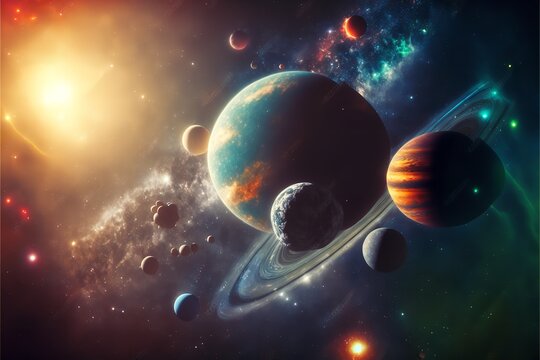Our solar system formed about 4.5 billion years ago from a dense cloud of interstellar gas and dust. The cloud collapsed, possibly due to the shockwave of a nearby exploding star, called a supernova. When this dust cloud collapsed, it formed a solar nebula – a spinning, swirling disk of material.

The planets beyond our solar system are called “exoplanets,” and they come in a wide variety of sizes, from gas giants larger than Jupiter to small, rocky planets about as big around as Earth or Mars. They can be hot enough to boil metal or locked in deep freeze.
Observations from the ground and from space have confirmed thousands of planets beyond our solar system. Our galaxy likely holds trillions.






